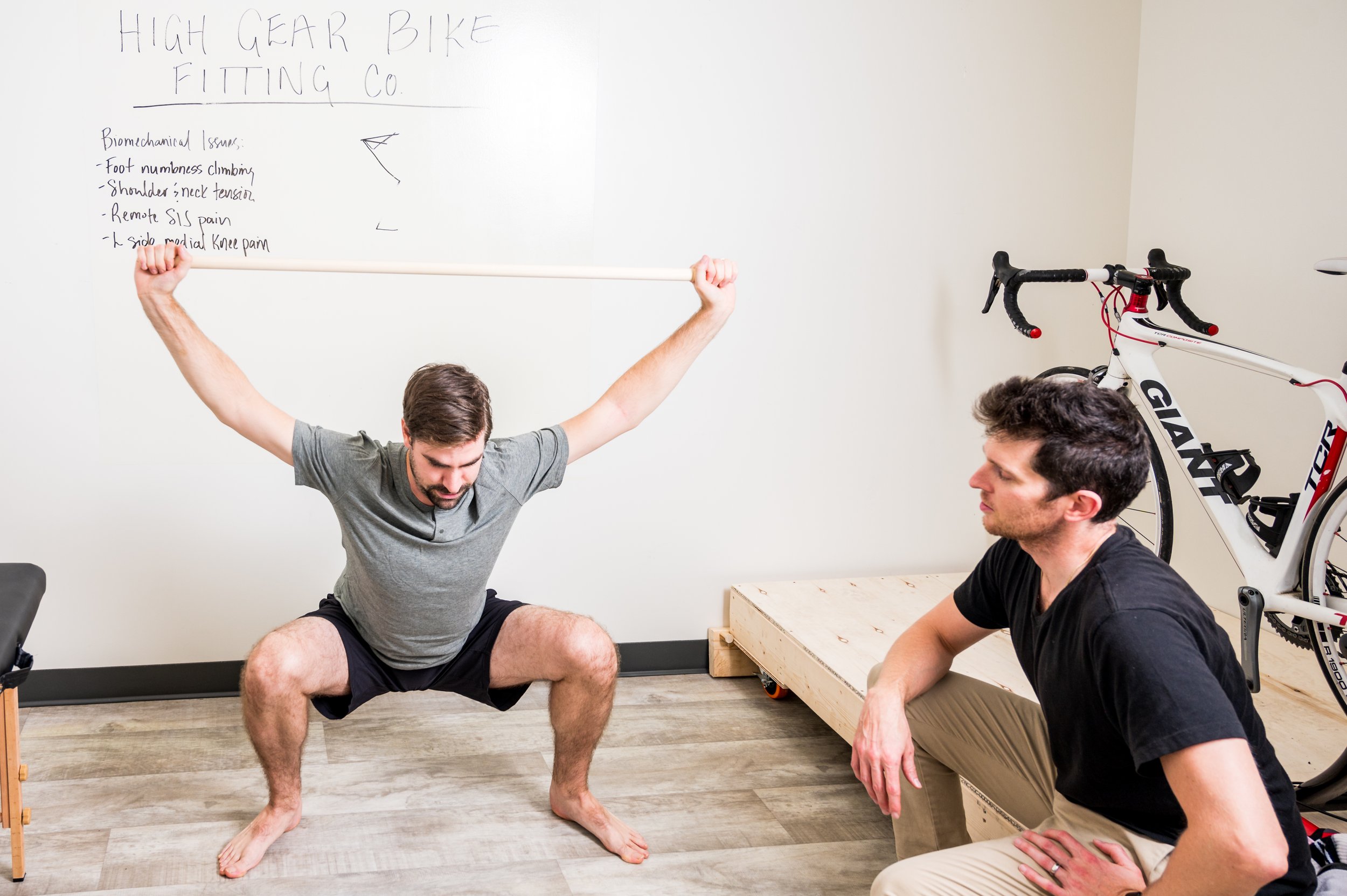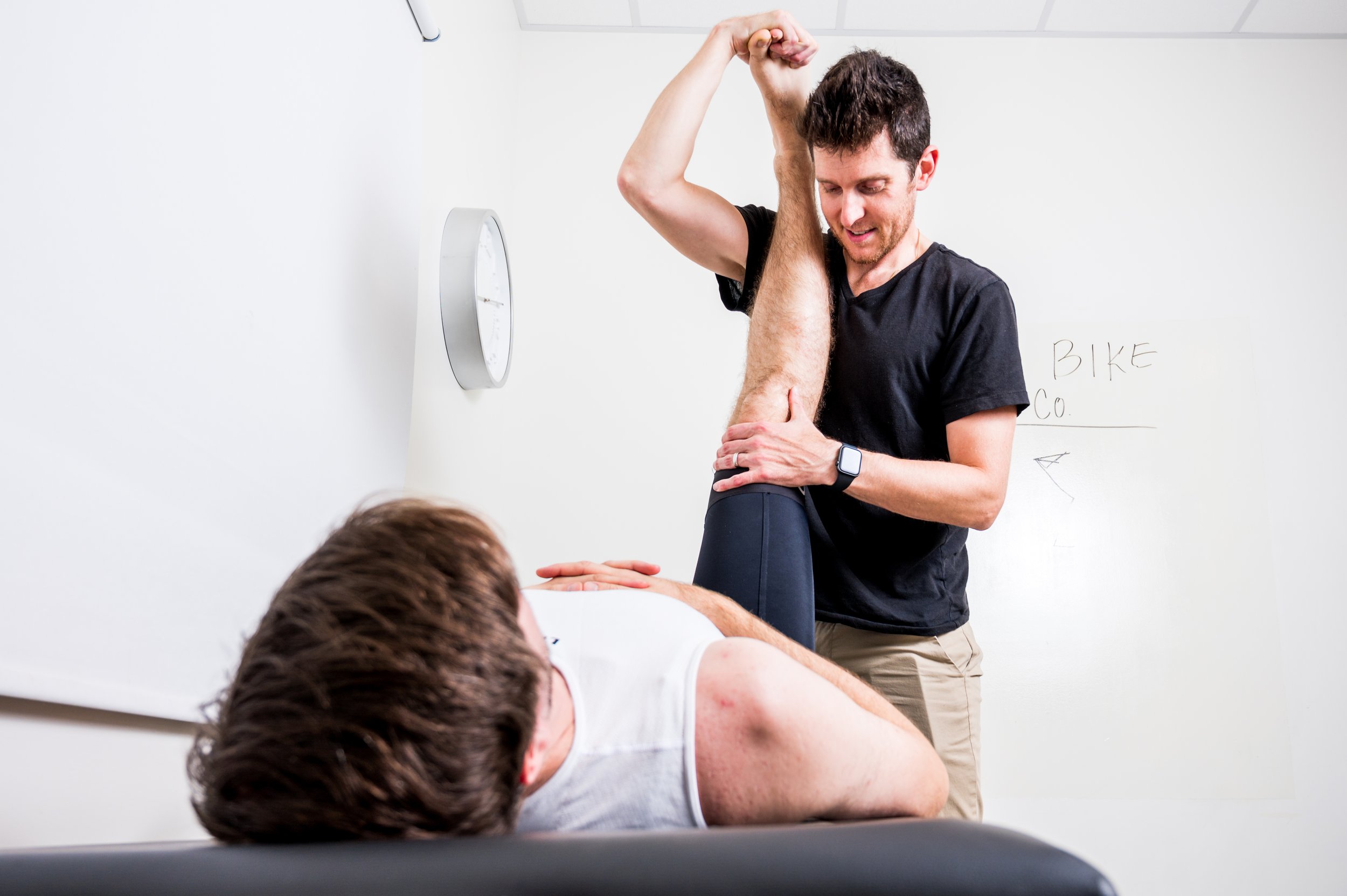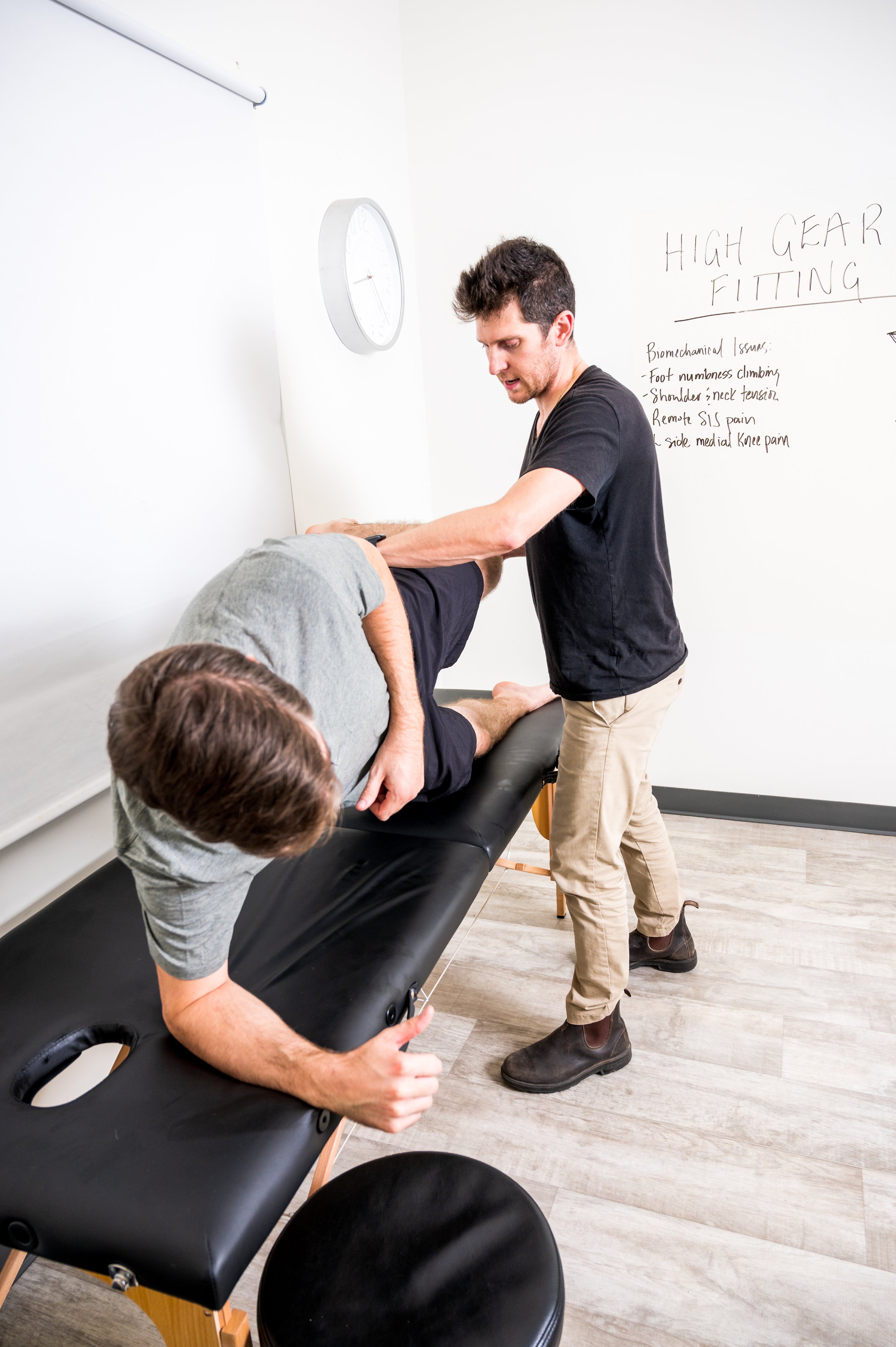
“When muscle and machine connect, extraordinary things happen”
— Annonymous
What is a bike fit?
Fit the bike to the person, NOT the other way around
Simply put, a bike fit is the process of systematically evaluating and identifying the physical structure and capacity of the individual (i.e. strength, flexibility, movement, motor control) and modifying the bike to accommodate their unique asymmetries, dysfunctions or limitations.
Optimizing a rider’s on-bike position will maximize comfort, prevent injuries, and increase performance.
Bikes are adjustable. People are adaptable.
Why get a bike fit?
Comfort. Cycling is typically an endurance sport, where riders spend hours at a time in the saddle. Discomfort on a bike (e.g. saddle soreness, hand or foot numbness, fatigue in the upper or lower extremities, etc.) can be a significant deterrent to consistent and enjoyable riding. A professional bike fit can optimize a rider’s position that maximizes comfort. A comfortable position is a safe, fast and efficient position.
Injury prevention. Cycling is a repetitive sport, and as such, the risk of injuries can be high. To put things into perspective, a rider pedalling at a cadence of 90 revolutions per minute (rpm) for two hours (120 mins) will complete a total of 10,800 revolutions. Any asymmetries, muscle tension or imbalances or malalignments may manifest injuries or discomfort, literally, anywhere from the top of your head, to your fingertips, to the bottoms of your feet and everywhere in between. A professional bike fit can help to prevent injuries before they start.
Performance. A professional bike fit can help find the fit window that optimizes power, aerodynamics and comfort/sustainability according the athlete’s cycling goals (e.g. commuting, 100 mi century ride, time trial/triathlon, general fitness.
How do you fit a bike to a rider?
At High Gear Bike Fitting Co. we opt for a dynamic fit process, where riders pedal their bikes on a stationary trainer. However, before examining on-bike position and pedalling dynamics, we complete a comprehensive physical examination of the client’s posture, gait, strength, flexibility, mobility, and motor control to identify weakness or asymmetries (e.g. leg-length discrepancy) that may cause problems on the bike so that they may be accommodated.
Special attention is paid to assessment of the feet, the footbeds of the rider’s shoes, and cleat position. Ensuring a well-supported foot inside the cycling shoe will enhance proprioception of the feet, reduce areas of high pressure and improve overall lower limb function. G8 Performance 2620 customizable orthotics are available for additional purchase..
The rider’s on-bike position and pedalling dynamics are carefully observed and analyzed from both the side, front and back. Based on the rider’s positional mechanics, pedalling dynamics and subjective feedback, we then adjust the bike to optimize the rider’s position to maximize comfort, power and or aerodynamics.
Enhancing the rider.
Bikes are adjustable and humans are adaptable.
Based on the client’s physical assessment, we prescribe strengthening, stretching, mobility and motor control exercises that are specific to the client’s needs. All clients will receive a detailed training programme, that includes video demonstration of the exercises, intensity and volumes (frequency, reps and sets).
All prescribed exercises are unique to the client, and are intended to compliment their new position on their bike, prevent injuries, and increase performance.










